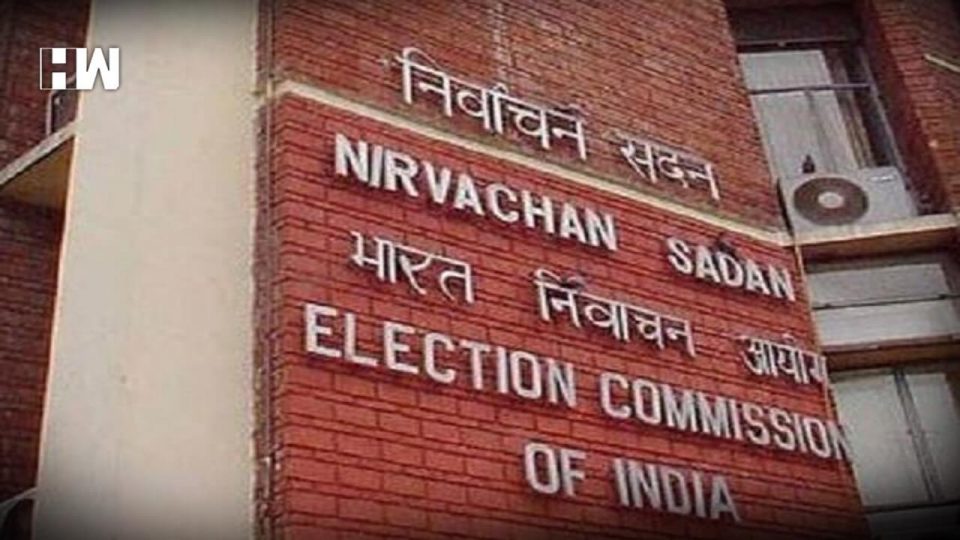New Delhi | As it prepares for the mammoth exercise of counting of votes for Lok Sabha polls, the Election Commission has stated that in case of a mismatch between EVM and VVPAT machine counts, the latter will be held valid.
Though the exercise of matching EVM results with paper trail machine (VVPAT) slips was being held in various assembly elections, this is the first time it will be undertaken in Lok Sabha polls.
Citing rule 56 D (4) (b) and 60 of the Conduct of Election Rules, a senior Commission functionary said instructions have been issued to all state chief electoral officers that in case of a mismatch between the result displayed on the control unit of electronic voting machine and the manual count of slips generated by the VVPAT, the slips will be recounted until the tally matches either the EVM result or one of the previous VVPAT slip counts and this will be taken as the final number.
According to the EC, no mismatch has been reported since the practice of cross-checking votes was introduced.
As the Supreme Court on Tuesday made it clear that random matching of VVPAT slips with EVMs will take place in five polling booths per assembly segment, the exercise will be held in 20,600 of the 10.35 lakh polling stations on May 23 when votes for the Lok Sabha elections are counted.
So far, paper audit trail checks were done in only one polling station per assembly segment selected randomly by a draw of lots or lottery system, though the VVPAT machines are deployed in all the polling stations.
A top official said it used to take one hour when slips of one VVPAT machine were counted in one polling station per assembly segment. “Four additional VVPATs will take on an average four additional hours to count,” he said.
The official results would take at least four more hours to be declared.
India has 4,120 assembly seats. Now, multiplied by five, the paper audit trail checks will take place in 20,600 polling stations spread across these assembly seats.
“The number of voters vary from 800 to 2,500 per polling station,” another functionary said.
Since Union Territories such as Chandigarh, Daman and Diu, Lakshadweep, Andaman and Nicobar, and Dadra and Nagar Haveli do not have state assemblies, five polling stations will be selected randomly. This would mean another 25 polling stations.
A cautious approach by the EC, thin margins of leads and counting of paper trail machine slips were some of the key factors that led to the delayed poll results in Madhya Pradesh and Chhattisgarh in December last year.
With parties questioning the veracity of electronic voting machines, the poll panel was extra cautious in its approach.
The Chief Electoral Officers of Madhya Pradesh, Rajasthan, Chhattisgarh, Telangana and Mizoram were reminded of an old rule that they had to provide round-wise results to candidates without fail.
Referring to its April 2014 instruction, the poll panel had said observers and returning officers would sign candidate-wise results for each round after checking everything.
The system ensured that very few demands were made for a recount, but it delayed the counting process.
The panel has set up nearly 10.35 lakh polling stations in the country for the seven-phase election, as compared to nearly 9.28 lakh during the 2014 polls — an increase of 10.1 per cent.
Nearly 39.6 lakh EVMs and 17.4 lakh voter verifiable paper trail machines (VVPAT) are being used in these polling stations. These include reserves.
One control unit and at least one ballot unit where buttons are placed constitutes an EVM.
After votes are cast, the polling station where VVPAT slips are matched with EVM results is decided by a draw of lots or lottery system in the presence of the candidates.
VVPAT machine is a device which dispenses a slip with the symbol of the party for which a person has voted.
The slip appears on a small window for seven seconds and then drops in a box. The voter cannot take it home.
As an independent media platform, we do not take advertisements from governments and corporate houses. It is you, our readers, who have supported us on our journey to do honest and unbiased journalism. Please contribute, so that we can continue to do the same in future.

